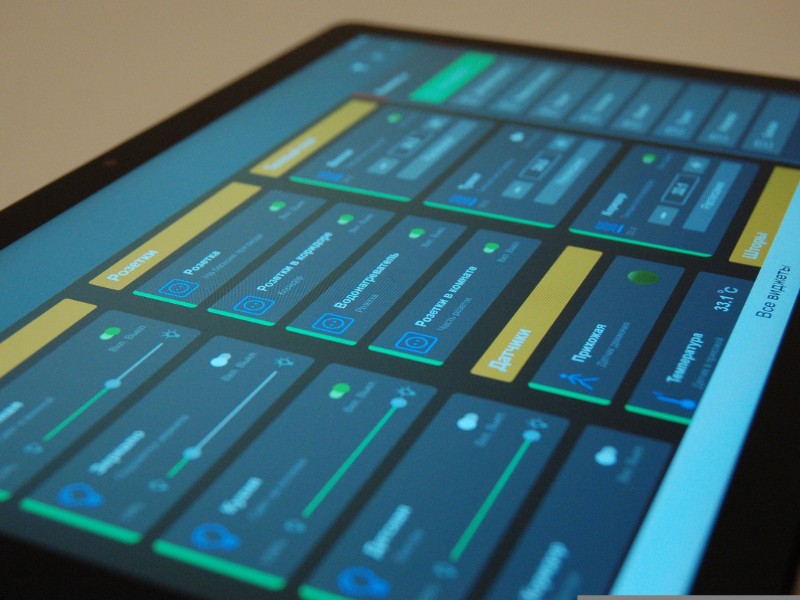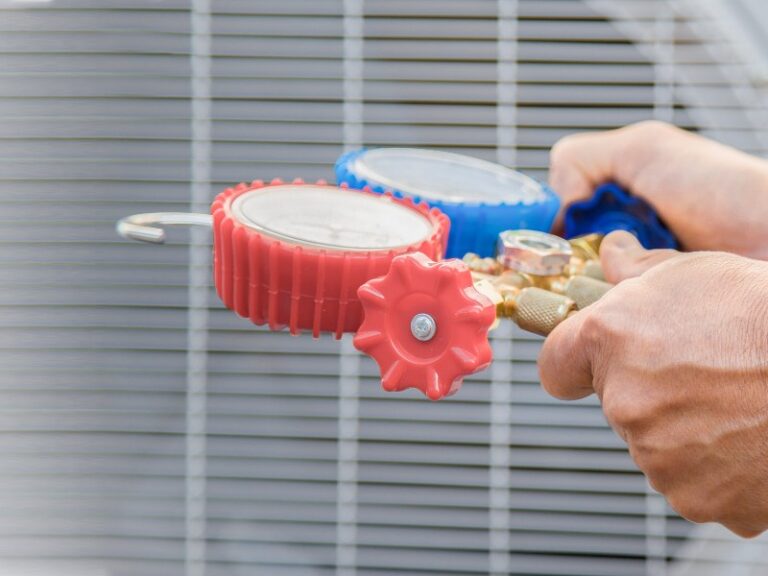The Internet of Things (IoT) has made significant strides in revolutionizing industries, and HVAC (Heating, Ventilation, and Air Conditioning) is no exception. With the growing demand for smarter, more efficient building systems, IoT technology is playing an increasingly crucial role in HVAC design. By leveraging IoT, HVAC systems can now provide real-time monitoring, predictive maintenance, energy optimization, and more—transforming how buildings are heated, cooled, and ventilated.
In this article, we’ll explore how IoT is shaping the future of HVAC design, its applications, benefits, and the role it plays in creating smart, energy-efficient buildings.
What is the Internet of Things (IoT)?
IoT refers to the network of physical devices (including sensors, actuators, and software) that connect to the internet and share data. These devices can be objects such as thermostats, air quality sensors, and HVAC components that communicate with each other, cloud-based systems, and mobile apps.
In HVAC systems, IoT technology is used to connect various components of the system to the internet. This allows for remote monitoring, data analysis, and automated control of HVAC functions. The integration of IoT into HVAC systems is transforming how HVAC units are designed, installed, and managed.
How IoT is Transforming HVAC Design
1. Real-Time Monitoring and Control
Real-time monitoring is one of the most significant contributions of IoT to HVAC design. By integrating sensors and smart devices with the HVAC system, building owners and HVAC technicians can track system performance remotely in real-time. These devices can monitor parameters like temperature, humidity, airflow, and air quality, providing instant feedback on system performance.
- How It Works: Sensors installed in key areas of the building (such as ducts, vents, and HVAC units) send data to a centralized system, often a cloud-based platform. Building managers can access this data through a mobile app or web dashboard, enabling them to control and adjust the system as needed.
- Benefits:
- Remote control: HVAC systems can be adjusted remotely, ensuring optimal performance without the need for on-site visits.
- Instant alerts: Receive alerts when there are irregularities or performance issues, allowing for timely interventions.
- Improved comfort: Continuous monitoring ensures the system maintains the desired indoor climate with minimal effort.
2. Predictive Maintenance and Reduced Downtime
One of the most valuable features of IoT in HVAC systems is predictive maintenance. IoT devices collect vast amounts of data from HVAC components, which can be analyzed to predict failures before they occur. This helps identify potential issues such as wear and tear, dirt buildup, or component failure long before they cause a breakdown.
- How It Works: IoT-powered HVAC systems track real-time performance metrics and identify anomalies in data patterns. For example, if a motor shows signs of strain or a filter is nearing clogging, the system can automatically notify technicians to schedule repairs or part replacements.
- Benefits:
- Increased system lifespan: Proactive maintenance ensures that HVAC systems are operating at peak efficiency, extending their useful life.
- Cost savings: Preventing major failures reduces repair costs and minimizes downtime.
- Reduced emergency repairs: By catching issues early, predictive maintenance helps avoid costly emergency repairs and service interruptions.
3. Energy Optimization and Cost Savings
One of the most compelling reasons to integrate IoT into HVAC systems is its ability to enhance energy efficiency. Traditional HVAC systems often run based on preset schedules or manually adjusted settings, which may not always align with the actual needs of the building.
- How It Works: IoT-enabled HVAC systems collect data on variables such as occupancy, external temperature, and humidity levels. This data allows the system to dynamically adjust heating, cooling, and ventilation based on real-time needs. For example, if a room is unoccupied, the system can automatically reduce heating or cooling to save energy.
- Benefits:
- Smart scheduling: IoT systems automatically adjust based on occupancy, weather forecasts, and energy demands, ensuring that HVAC systems are never running when they aren’t needed.
- Energy efficiency: Real-time adjustments help minimize energy use, leading to significant cost savings and a reduced carbon footprint.
- Sustainability: IoT-driven energy optimization makes HVAC systems more sustainable, which is increasingly important for businesses striving to meet green building standards and reduce environmental impact.
4. Enhanced Indoor Air Quality (IAQ)
Indoor air quality (IAQ) is a growing concern, especially in commercial buildings, schools, and healthcare facilities. Poor IAQ can lead to discomfort, reduced productivity, and even health problems. IoT technology plays a vital role in ensuring that HVAC systems help maintain optimal air quality.
- How It Works: IoT devices, such as air quality sensors, continuously monitor factors like CO2 levels, humidity, temperature, and particulate matter. If air quality levels fall below acceptable thresholds, the HVAC system automatically adjusts ventilation rates or activates air purifiers.
- Benefits:
- Healthier environments: Ensures that the air inside the building is clean and free of harmful particles and pollutants.
- Improved comfort: Maintaining optimal air quality improves occupant comfort, leading to higher satisfaction and productivity.
- Regulatory compliance: Helps businesses comply with indoor air quality regulations, especially in healthcare and commercial buildings.
5. Integration with Smart Building Systems
IoT enables seamless integration between HVAC systems and other smart building technologies, such as lighting, security, and energy management systems. This creates a holistic, interconnected environment that improves overall building performance and energy management.
- How It Works: An IoT-based HVAC system can integrate with smart thermostats, lighting systems, and automated shading systems to ensure that all aspects of the building’s environment are optimized for energy efficiency and comfort.
- Benefits:
- Centralized control: Building managers can monitor and control HVAC systems, lighting, and other systems from a single interface, improving operational efficiency.
- Automated adjustments: The system can automatically adjust heating, cooling, and lighting based on occupancy and environmental factors, improving comfort while reducing energy consumption.
- Optimized building performance: Integration ensures that all systems work together seamlessly, leading to better energy use and cost savings.
The Future of IoT in HVAC Design
The future of IoT in HVAC design is incredibly promising. As IoT technology advances, HVAC systems will continue to evolve, offering even greater efficiency, automation, and intelligence. Some potential developments include:
- AI-driven HVAC systems: The combination of AI and IoT will allow HVAC systems to learn occupant preferences and adjust automatically, improving comfort and energy savings.
- Advanced sensor technology: New sensors will provide even more precise data on air quality, temperature, humidity, and energy use, further enhancing system performance.
- Building-wide integration: IoT will enable deeper integration across all building systems, creating smart buildings that optimize energy use and occupant comfort in real-time.
How CoolCalc Helps with IoT Integration in HVAC Design
To ensure that HVAC systems are properly sized and optimized for IoT integration, CoolCalc can assist HVAC professionals in performing cooling load calculations and designing systems that are energy-efficient and IoT-ready. By considering factors like building size, insulation, and local climate, CoolCalc ensures that HVAC systems are designed to work seamlessly with smart building technologies.
- Benefits of Using CoolCalc:
- Precise load calculations for energy-efficient HVAC systems.
- Support for IoT integration by ensuring systems are properly sized for automation and smart technology.
- Energy-saving designs that align with IoT capabilities, leading to lower operating costs and reduced environmental impact.
Conclusion
The integration of IoT technology into HVAC systems is transforming the way buildings are heated, cooled, and ventilated. From predictive maintenance to real-time energy optimization, IoT is making HVAC systems smarter, more efficient, and more responsive. As buildings become increasingly smart and energy-conscious, IoT-enabled HVAC systems will play a critical role in creating comfortable, healthy, and sustainable environments.
By understanding and embracing IoT technology, HVAC professionals can enhance system performance, reduce energy consumption, and improve comfort for building occupants. Tools like CoolCalc help ensure that HVAC systems are properly sized and optimized to take full advantage of IoT capabilities, paving the way for smarter and more energy-efficient buildings.




